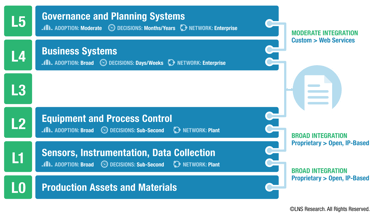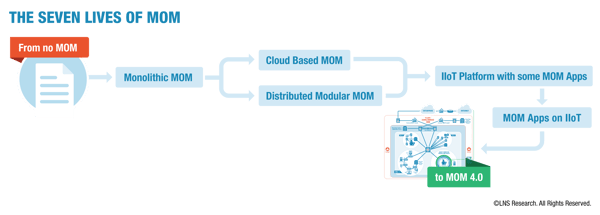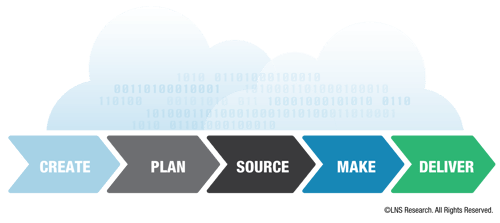 LNS has had lots of interest in our research on jumpstarting Digital Transformation with MES. It has led to many conversations with manufacturers and, unsurprisingly, these conversations have differed hugely depending on the level of digital maturity and the industry in the company involved. What became clear during these discussions is that companies with little automation and less manufacturing operations integration were keenest to get going with a Digital Transformation initiative.
LNS has had lots of interest in our research on jumpstarting Digital Transformation with MES. It has led to many conversations with manufacturers and, unsurprisingly, these conversations have differed hugely depending on the level of digital maturity and the industry in the company involved. What became clear during these discussions is that companies with little automation and less manufacturing operations integration were keenest to get going with a Digital Transformation initiative.
From an industry viewpoint, there is a clear distinction in what jumpstarts Digital Transformation. Asset-intensive industries such as oil and gas, refining, bulk chemicals and power have been leaders in moving to an Industrial Internet of Things (IIoT) platform. This is primarily because one of the first mature applications delivered on a multitude of vendors’ platforms is Asset Performance Management (APM). APM can undoubtedly bring great benefits but that topic is beyond the scope of this post – if you are a process industry guy, or even feel that asset management might be a good starting point for your Digital Transformation in a discrete environment, read the mass of excellent material provided by my colleagues here at LNS.

The world of discrete and batch manufacturing (from pharmaceuticals to automotive, and aerospace and defense to electronics) is more focused on the product than the asset and, crucially, the world of the Internet of Things (IoT) extends way beyond the factory floor. In our eBook, “Jumpstart Digital Transformation with MES,” we introduced the concept of the seven lives of MOM, leading ultimately to a world in which MOM functionality is almost exclusively through IIoT apps running where it suits them. This always opens up interesting discussions in many areas, two of which we will address today:
- Running apps at the edge
- IIoT beyond existing MES solutions
Wondering Where to Run Your MES?
As we have said many times, traditional monolithic MES systems almost always run on-premise, often with dedicated local servers. Indeed, large plants might have many distinct MES systems that communicate only via business systems; a car factory has many sections that, although they are all striving to build the same car, have little communication. A body in white is made for an order, it is passed to painting, and then on to assembly. Each work order is separate from the others and little coordination takes place. However, final quality is a function of the success of each step in the process, and bringing together all the data from the different manufacturing processes is the only way to get a true “as built” record of each vehicle.
Recognizing that many automotive OEMs will already have integrated MES systems for each part of the plant, it doesn’t make sense to replace functioning software with something new just for the sake of change. Manufacturers with MES should be looking at a preferred Operational Architecture and compare that to the current state – bringing together different parts of plants already well-controlled via an IIoT platform might be a practical first step towards Digital Transformation. Internal opportunities are huge by sharing information to help drive ever better manufacturing processes and by adding to data collection with smart devices running on the edge and connected to the IIoT platform. Asset management, augmented reality to help operators with their jobs, and unerring focus on process improvement are just a few examples of bringing IIoT and traditional MES together in the plant.

Think Beyond the Plant
We have spent much effort and words on the future of manufacturing plants and the benefits that IIoT platforms can bring. Real examples of manufacturing plants with analytics and apps that drive true value are starting to appear. However, the future of IoT goes way beyond the plant and will deliver to manufacturers the prospect of closer relationships with their end-user customers. Bringing data from outside the plant and mixing it with design and manufacturing data will allow us to engage with customers in ways that are entirely unimaginable today. We have already seen online (and with no client intervention) downloads to update software in cars and can imagine the same in many products. The ability to maintain exact as-built and as-maintained records in products as well as a rigorous Digital Twin will open new horizons.
The sky is the limit and as you look at your Digital Transformation journey, consider the new and incredible place that your product and its Digital Twin can have in the wider world.